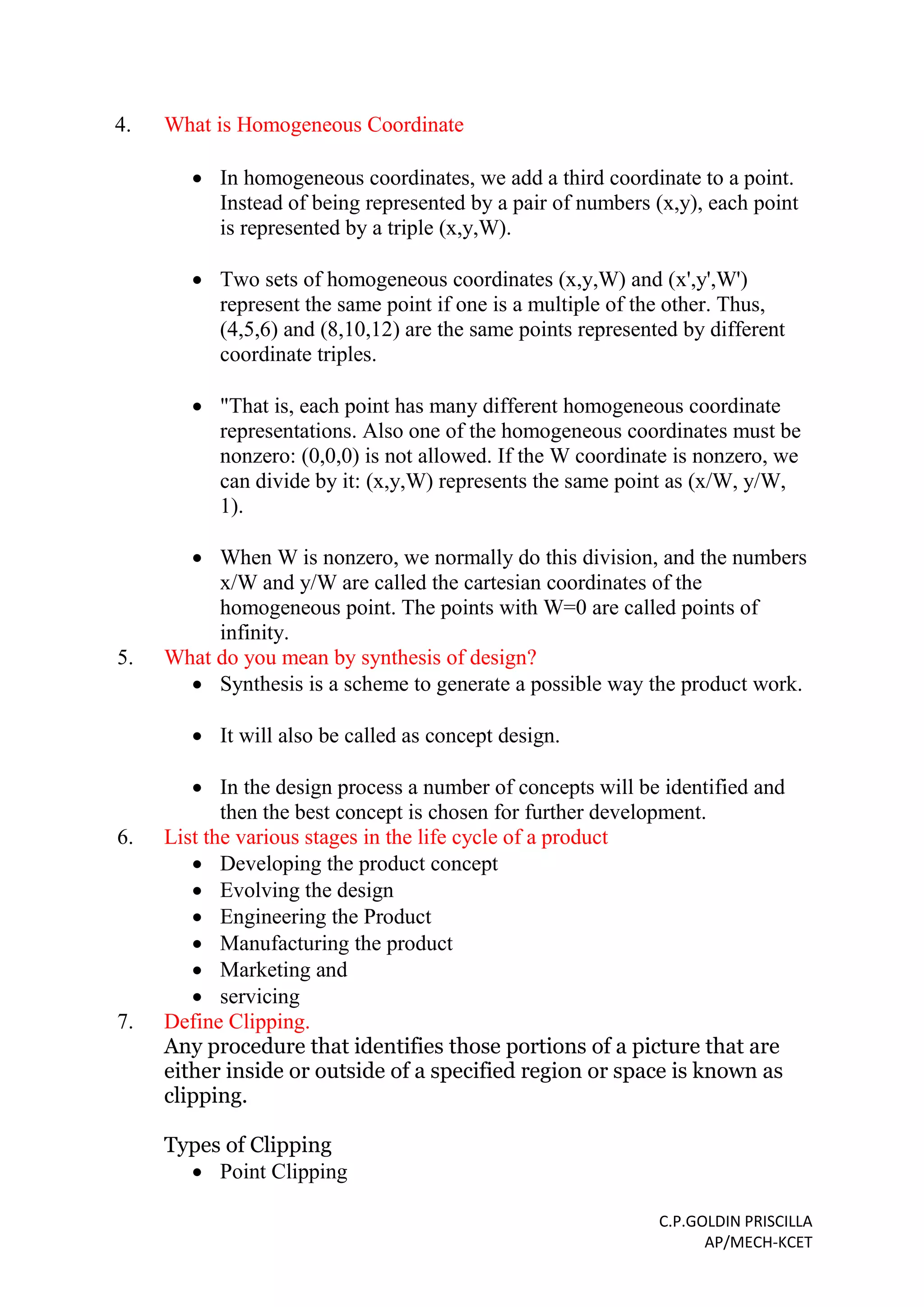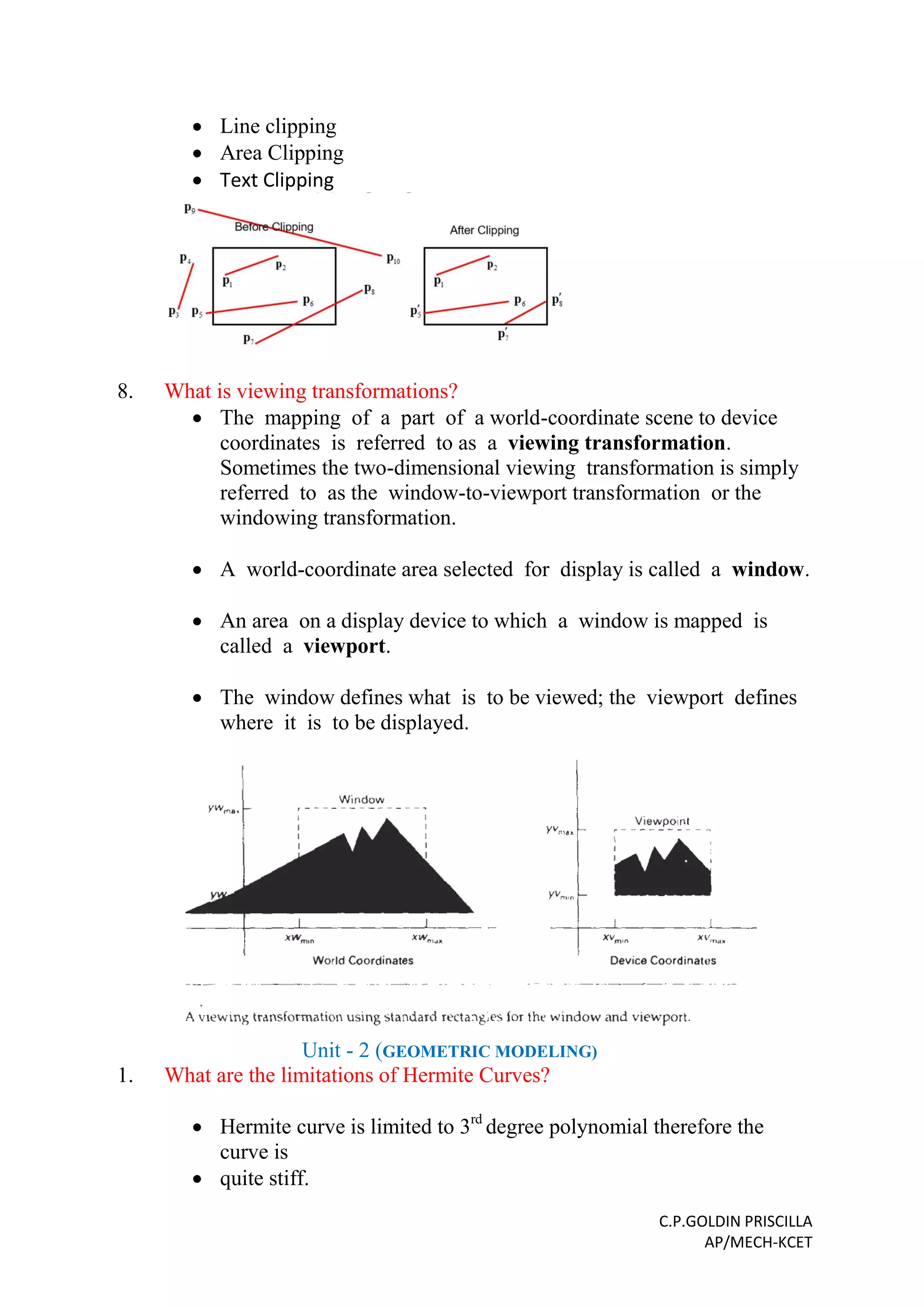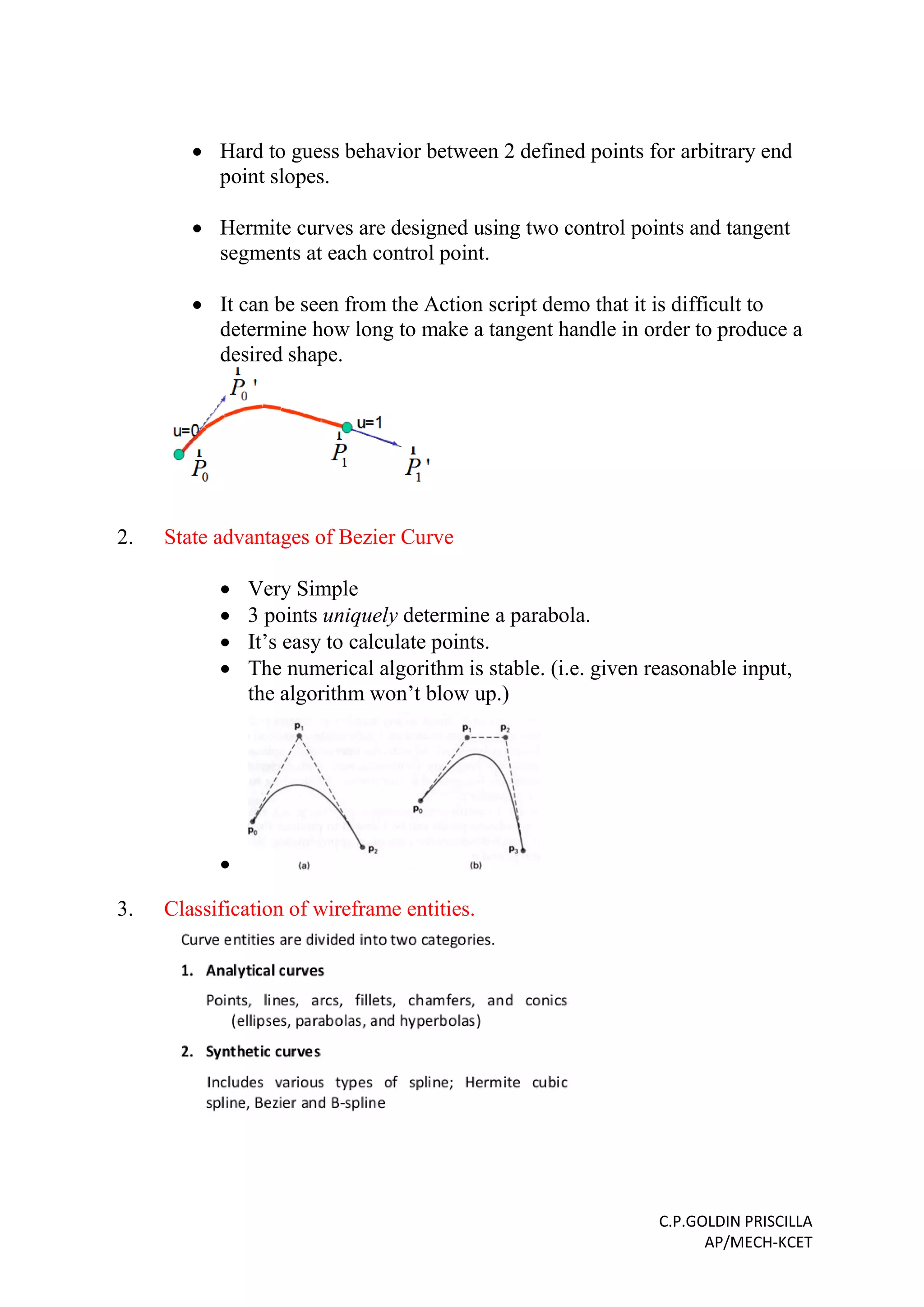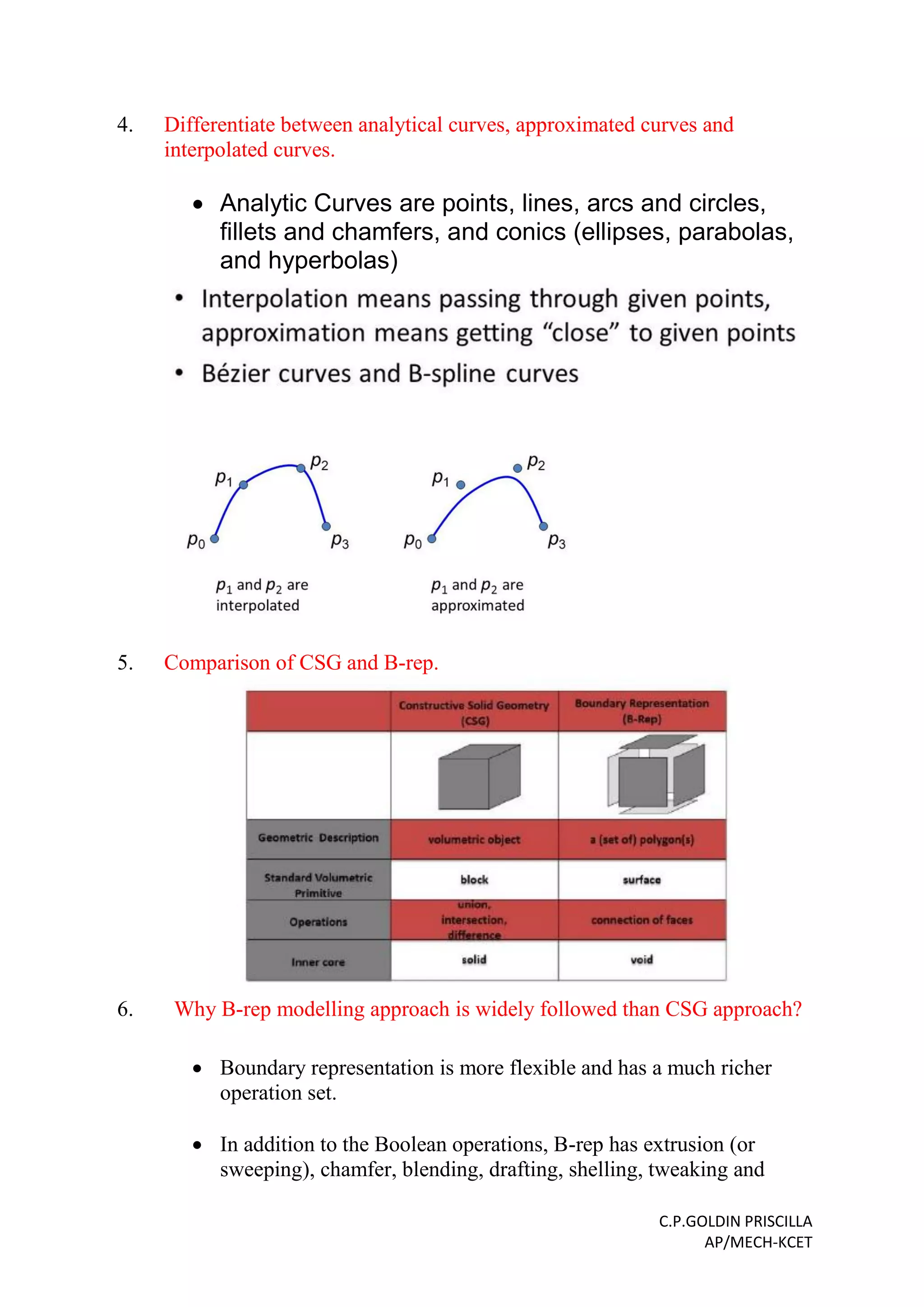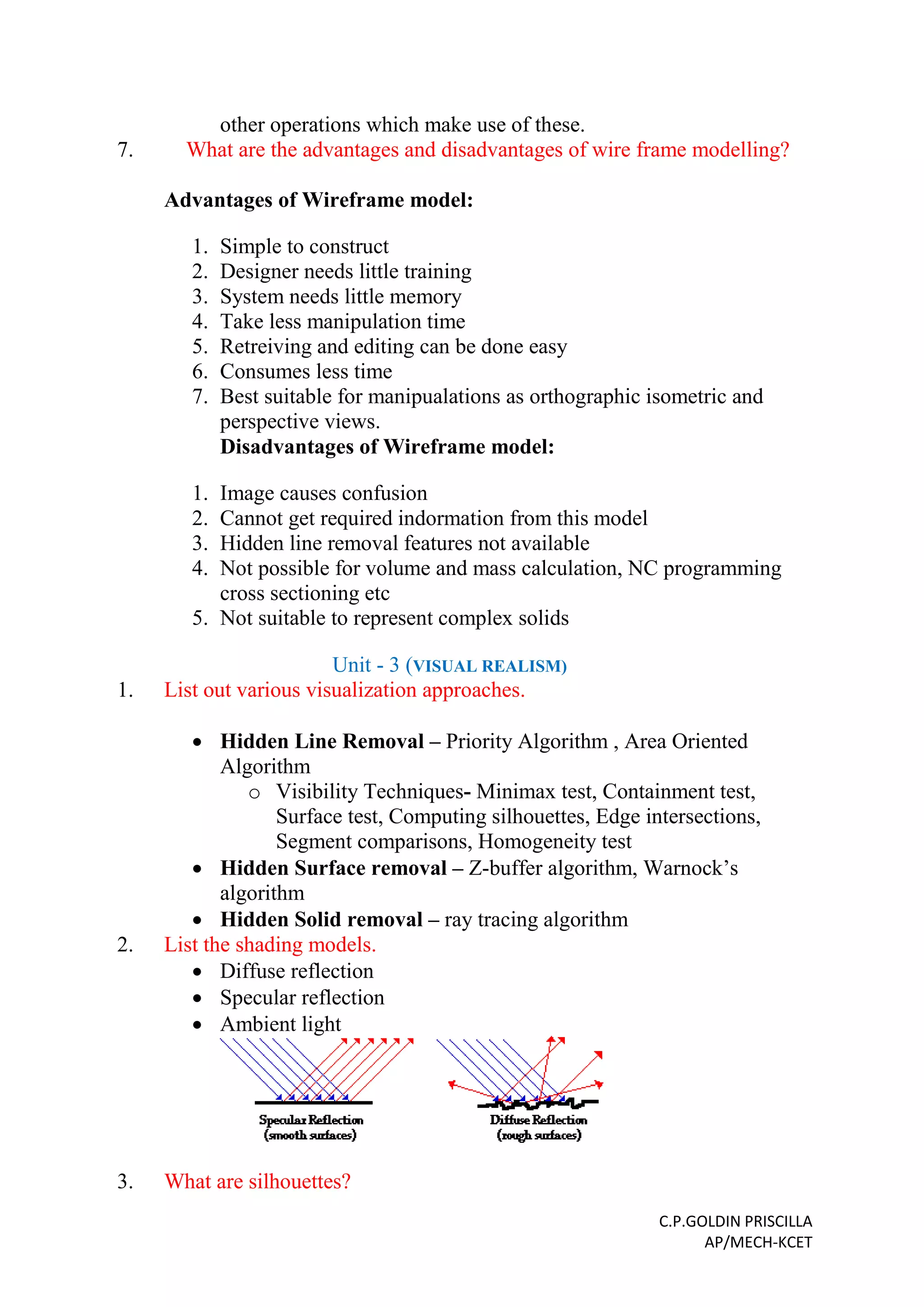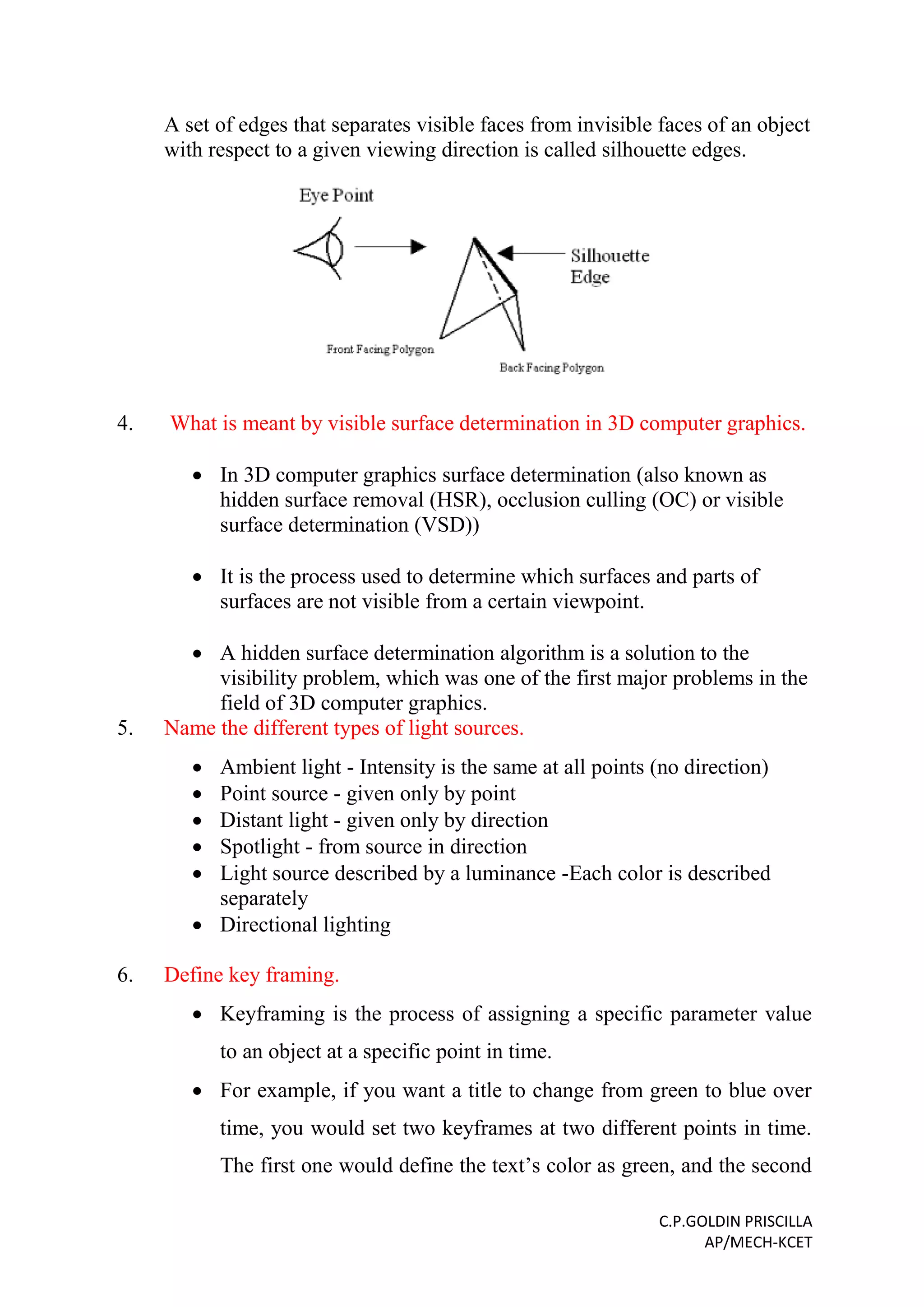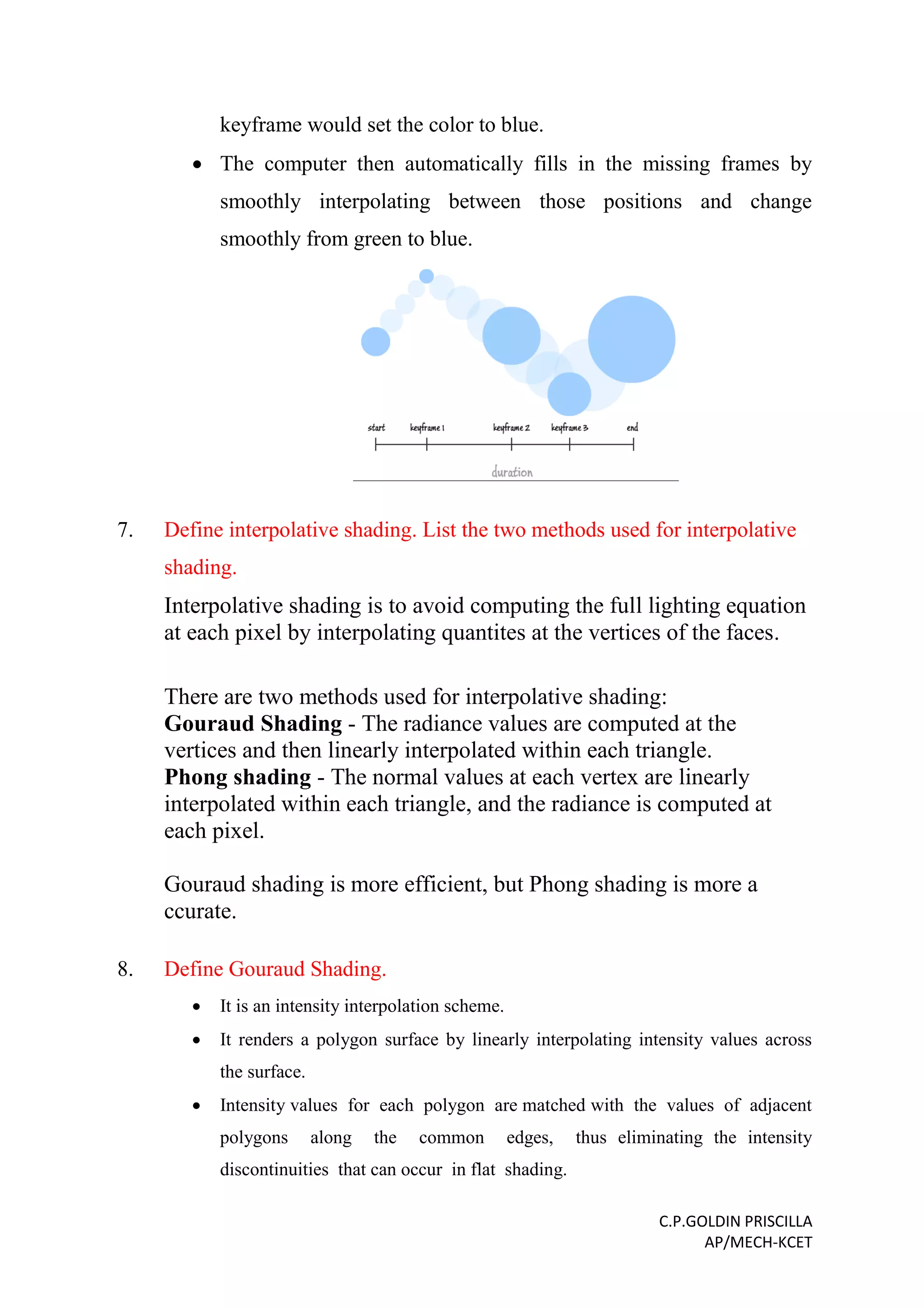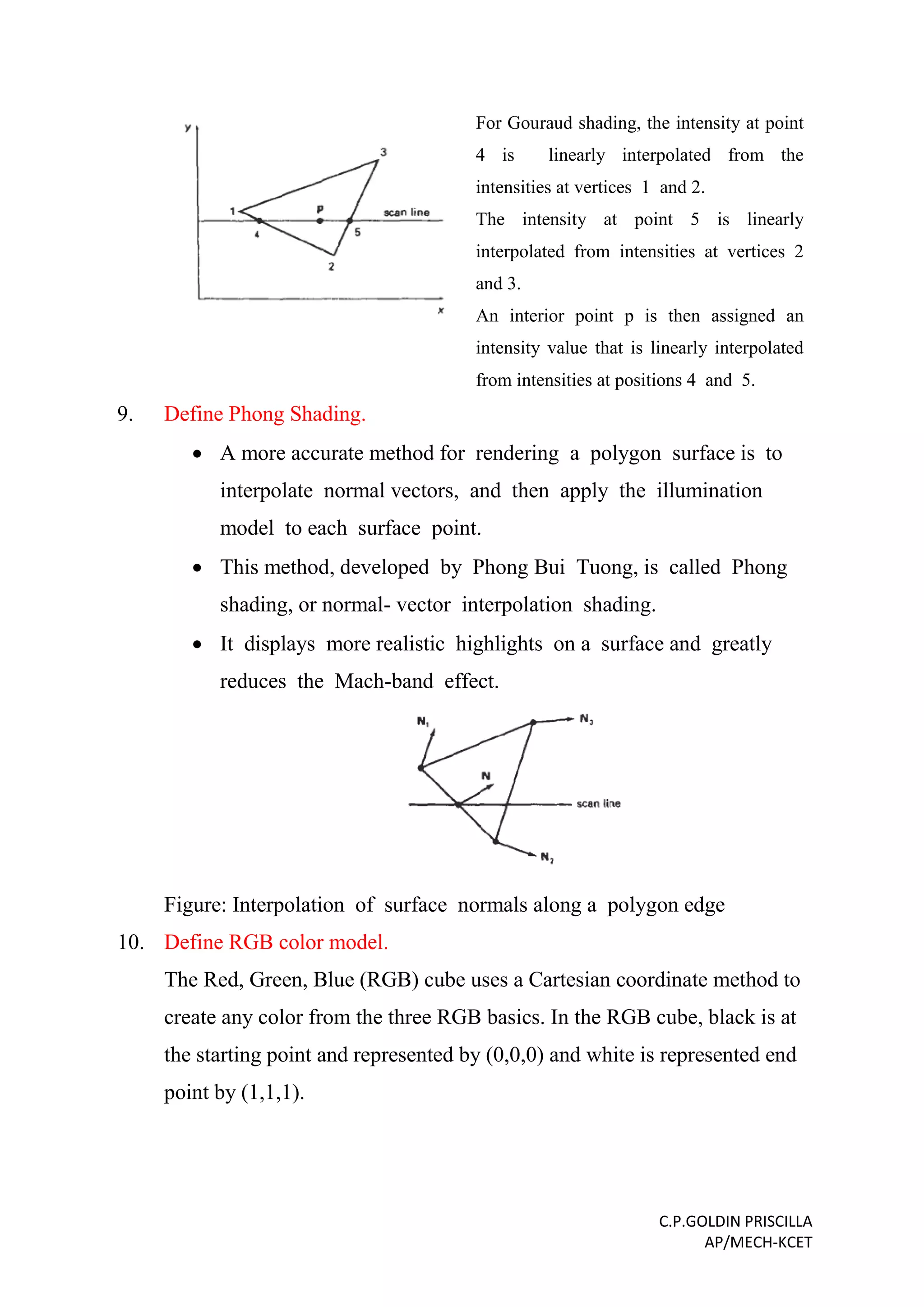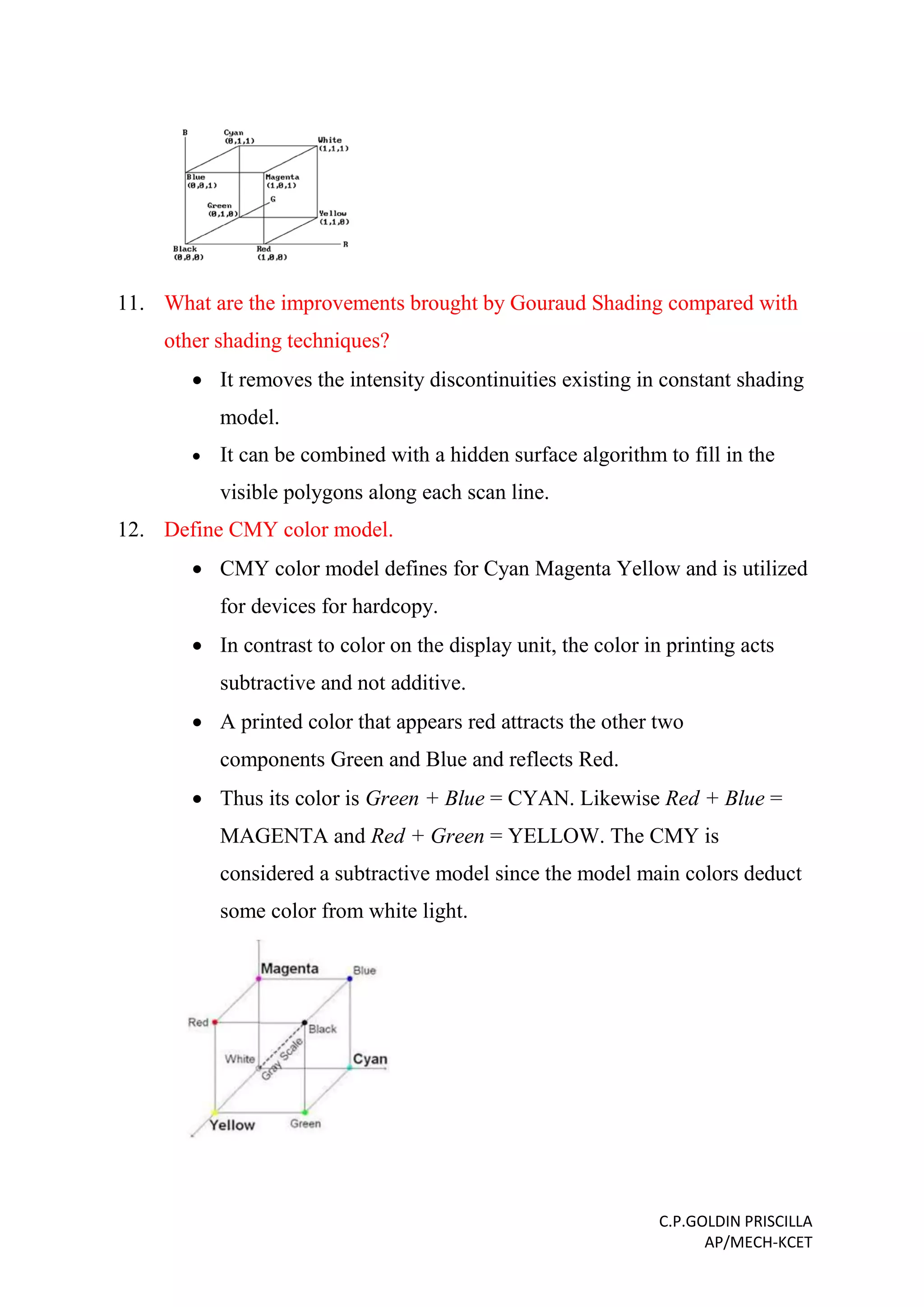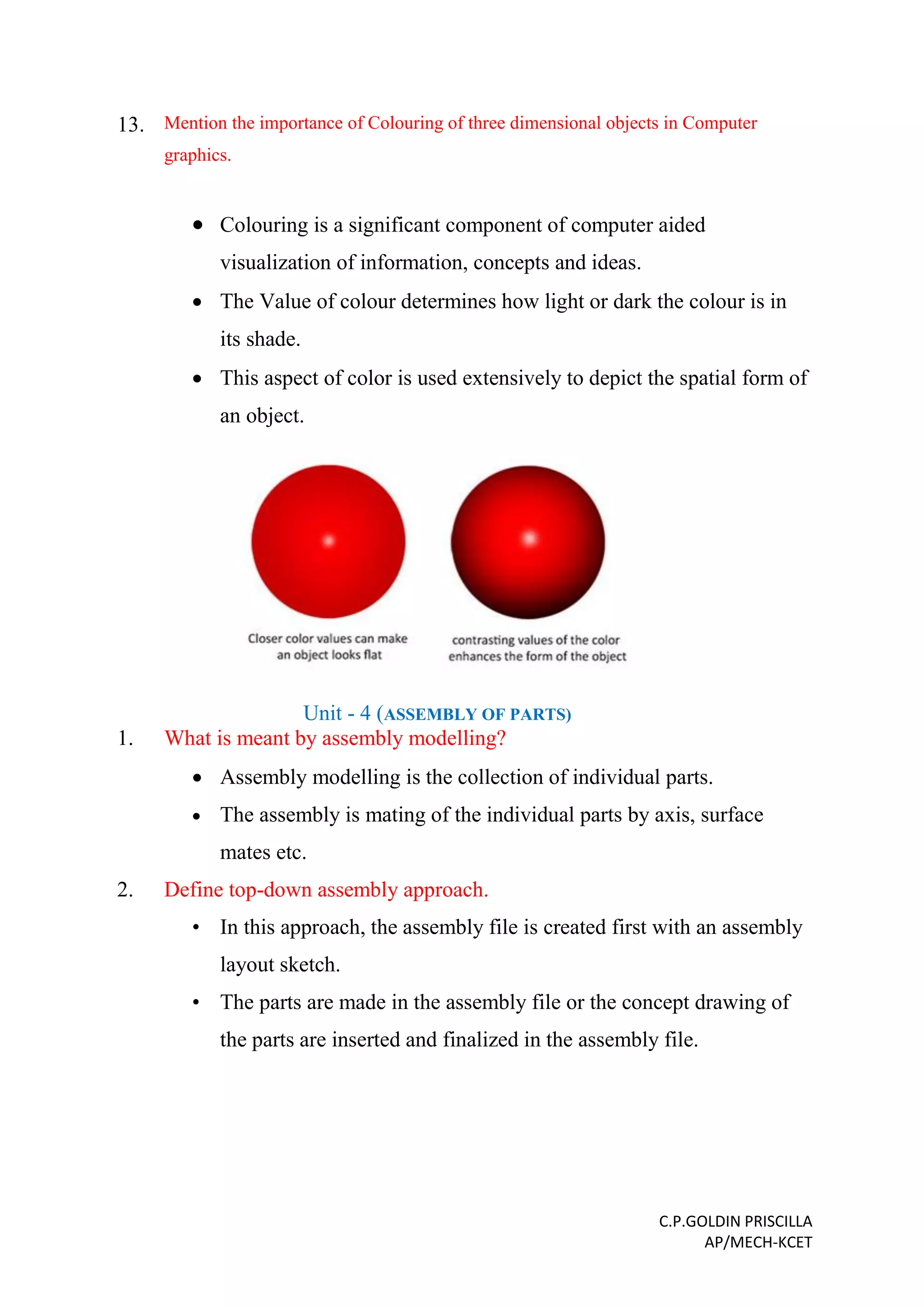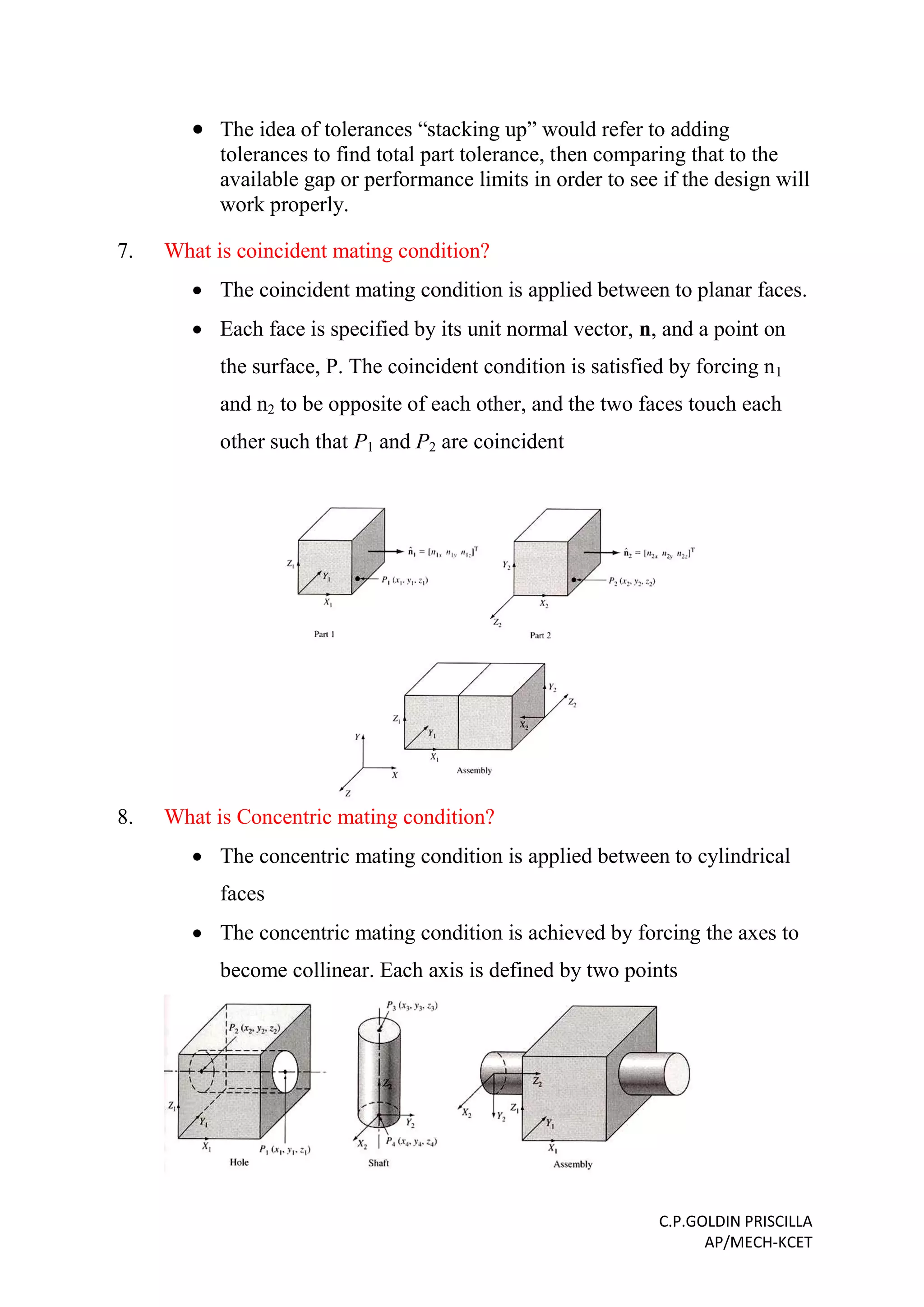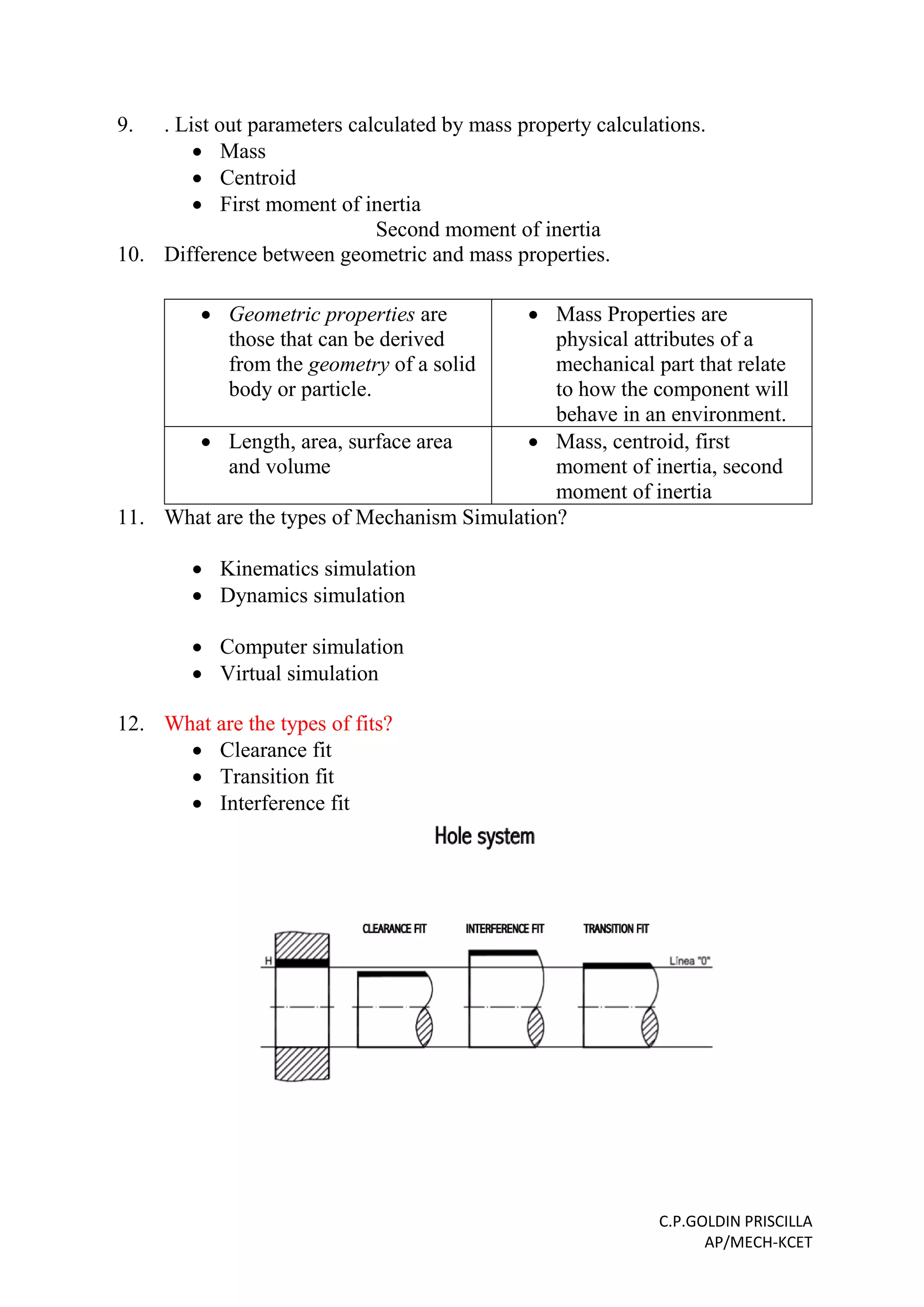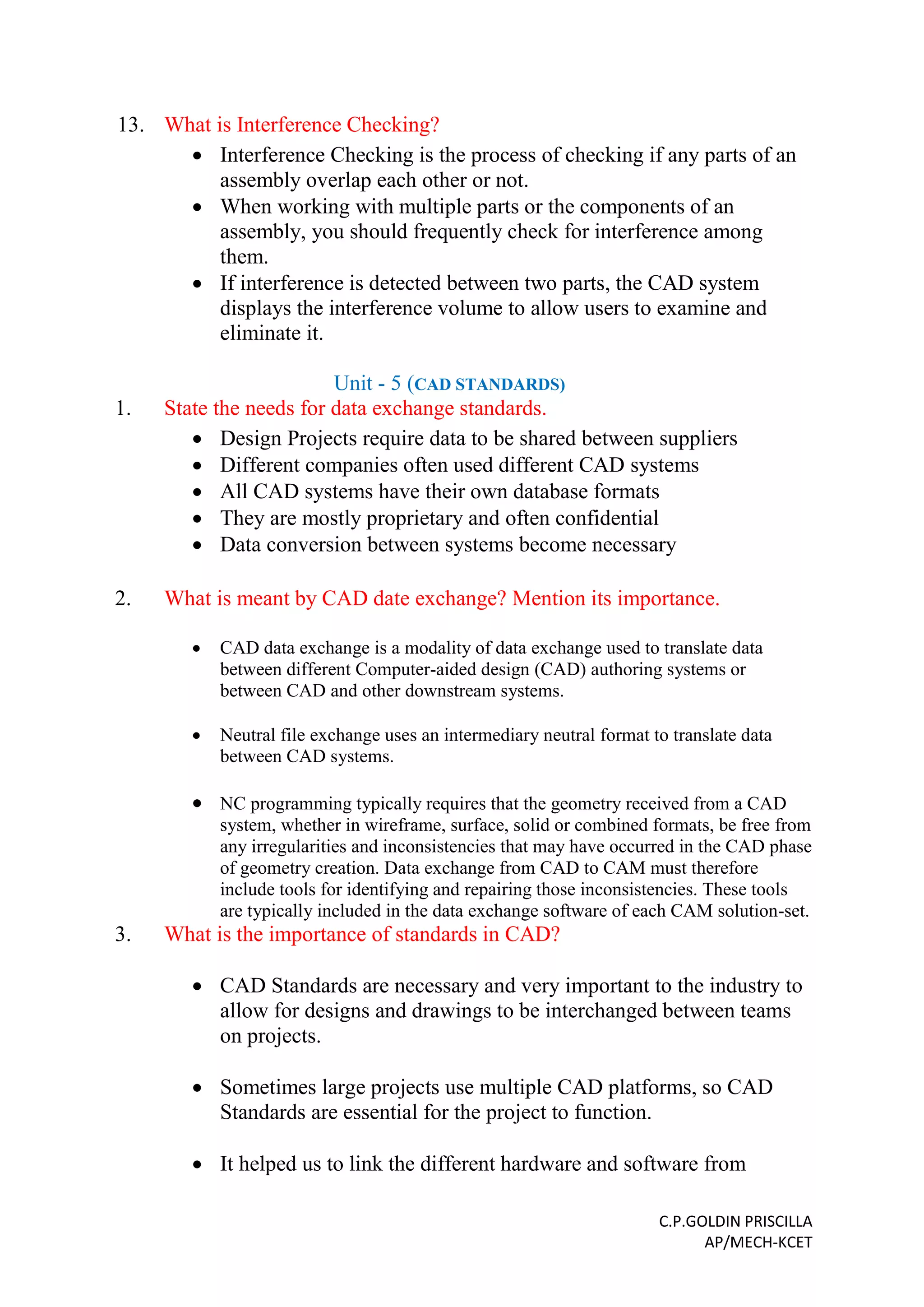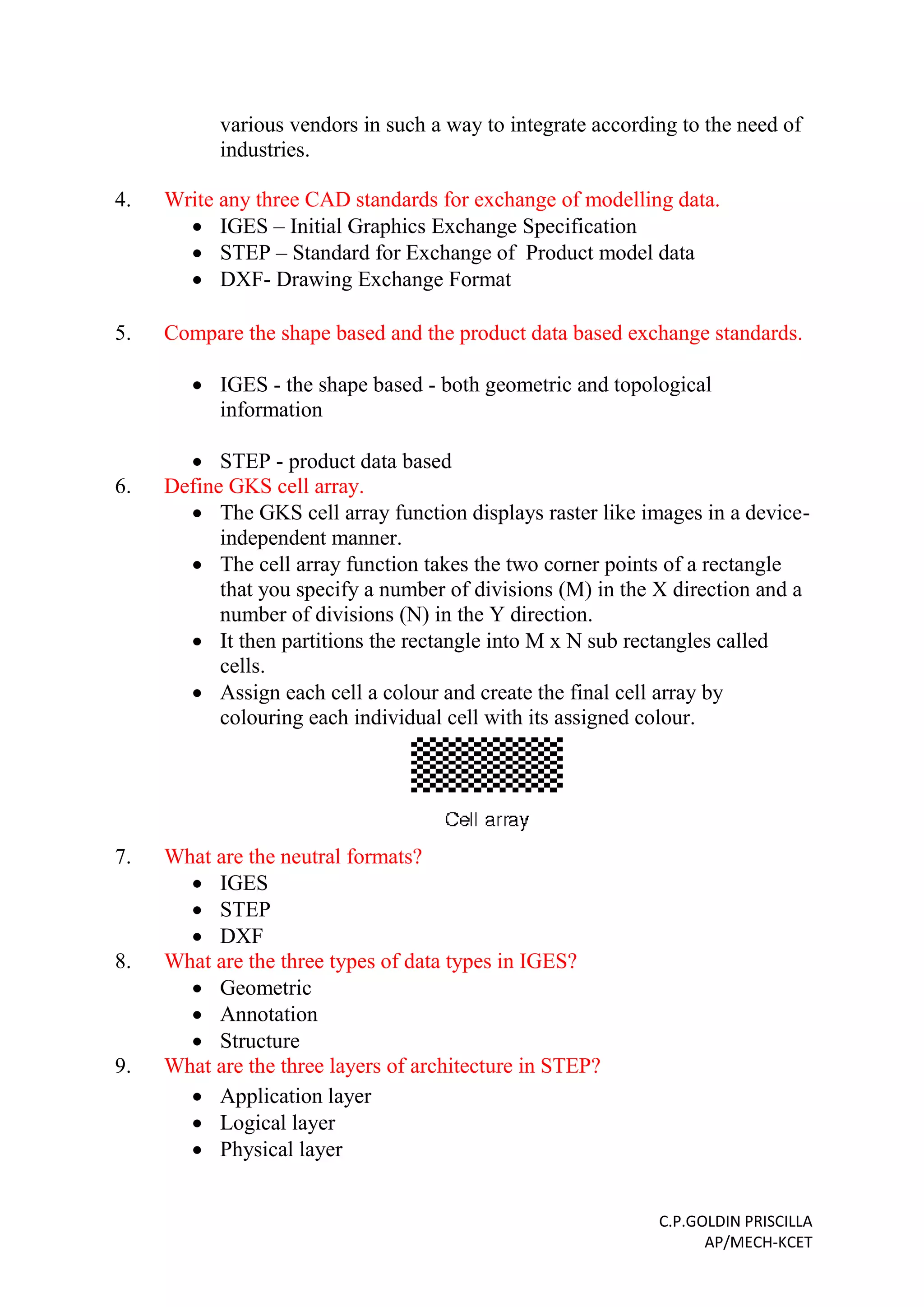The document provides a summary of important two mark questions and answers related to the topics of computer aided design (CAD). It includes questions about the design process, applications of CAD in mechanical engineering, geometric transformations, homogeneous coordinates, product design synthesis, the product lifecycle, clipping, viewing transformations, limitations of Hermite curves, advantages of Bezier curves, wireframe modeling approaches, visualization techniques, lighting models, keyframing, interpolative shading methods like Gouraud and Phong shading, color models like RGB and CMY. The document is organized by topic into different units covering fundamentals of computer graphics, geometric modeling, and visual realism.

